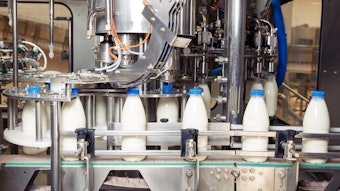
What is International Women’s Day? March 8, 2016 was a reminder for all of us to encourage the social, political and economic equality of the sexes. Originally dubbed International Working Women's Day, it's no wonder this day is linked to the pay gap present between genders.
Previously: Median Flavorist Salary: 2009
How does this day affect the flavor industry? The Institute of Food Technologists recently published a 2015 report on employee satisfaction in food sciences, including the flavor industry. A total of 2,343 respondents participated in the survey in 2015, which measured income, benefits, job satisfaction and stress factors in food science and technical professions.
Of note, the IFT story pointed out: "Flavorists, flavor chemists, and food scientists with expertise related to the Food Safety Modernization Act are in particularly high demand, according to recruiters interviewed for this article."
Food Scientists Love Their Jobs
The good news? Overall, 38% and 48% are highly satisfied and somewhat satisfied, respectively, with their jobs. The median salary remains at $90,000, flat from 2014.
In addition to satisfaction with an intellectually stimulating profession which includes satisfactory salary and benefits, 84% of respondents would choose their profession again.
Overall, the food science industry is filled with satisfied employees. But what does this have to do with International Women’s Day? For that, a little good news/bad news.
Women Drastically Underpaid
IFT’s report revealed that there are more ladies working in food science fields than ever before, and they're young. A whopping 74% of women working in food science are under 30.
The bad news? The survey indicated that women respondents earn roughly three quarters as much as their male counterparts, $79,000 to $105,000. Keep in mind, the national pay gap average for women across all industries is 79%.
Why Does a Salary Gap Exist?
The question continues to loom over us each year: why does a salary gap exist? The education gap is one reason. Nearly twice as many men have a Ph.D and MBA (29% and 9%, respectively) than women (15% and 6%, respectively). On a national scale, higher education is correlated with a higher income.
Experts suggest that this disparity is attributed to women being more likely to take off of work for family matters, such as raising a family or tending to an ill parent, than men. According to the survey, respondents noted work-life balance as the main challenge (41%) in the industry; however, women are more challenged with the balance than men.
Kerry Chou, WorldatWork, explained to IFT: “Because they start, they stop, they have to leave the workforce…they lose that salary momentum, so their salaries start lagging behind.”
What Can Companies and Professionals Do?
Addressing the salary gap continues to be a national concern. Companies, such as Google, for example, overlook previous salaries for potential employees and instead focus on what the employee’s skills are worth paying.
This gives women who have taken a break from the workplace an opportunity to jump back in without being penalized for the break.
If women are taking a hiatus from the workforce, there are multitudes of organizations available to keep employees in the industry and expanding their network. The Women in Flavor and Fragrance Commerce, for example, provides members (both men and women) a plethora of industry opportunities to stay involved and flex leadership skills during a hiatus.
The Institute of Flavor Technologists also provides members with a community to stay updated with the industry, which includes everything from webcasts to scholarship opportunities to educational courses.
Strengthening Education
The pay gap also stems from education disparities. STEM (science, technology, engineering and math) education provides a sturdy platform for future female scientists in the food science fields. The American Association of University Women (AAUW), for example, offers $3-4 million in scholarships for students interested in pursuing science-related fields.
Education for women continues to evolve with more science-related organizations, educational opportunities and a millennial generation that breaks the mold in traditional gender roles.
By providing budding female scientists with a supportive and sturdy platform to further their education past high school and college, perhaps this shift platform could diminish traditional gender roles that adversely influence the pay gap.
Click here to make a pledge today to end wage disparity across all industries.










